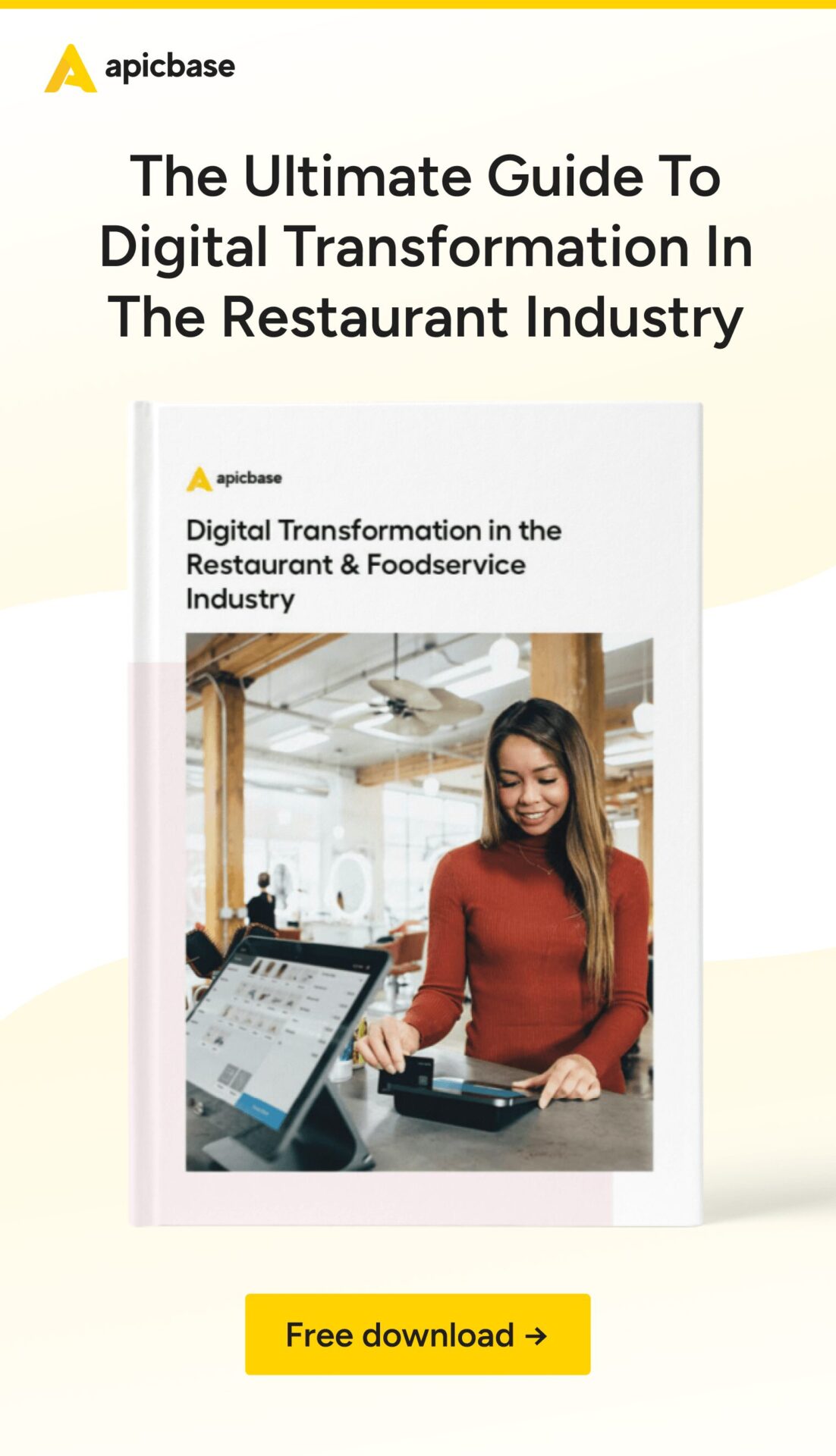Artificial intelligence (AI) and related technologies are transforming the way F&B operators in chains, hotels, and catering businesses work.
Advanced analytics and forecasting… automated procurement… streamlined FoH operations… you name it, tech companies, like Apicbase, have AI working in the background or are working on it.
The digital transformation of restaurants and foodservice businesses represents major advances for the industry, especially when AI becomes the driving force.
Think, a 25-75% reduction in food waste that translates to millions of dollars in savings… A fully automated supply chain… Accurate stock counts across dozens of different F&B service units (without time-consuming daily counts)… Streamlined allergen management, ensuring zero food allergy incidents.
The list goes on well beyond the restaurant back-of-house or food and beverage-related challenges.
But, except for a handful of agile organisations (and a few ‘big brand’ pilot tests), the F&B service industry is slow to take advantage of these new, cost-saving opportunities, especially for BoH operations.
The truth is that the majority of F&B organisations (large chains in particular) still rely on expensive, error-riddled, and sluggish legacy processes. Their digital F&B strategy is nonexistent.
What is restaurant digital transformation?
Restaurant digital transformation means foodservice companies are able to draw accurate, actionable, and timely insights from integrated software and automate parts of the operation. In a digitally transformed F&B environment, POS, menu management, payroll, and other processes & systems interconnect and ‘talk’. There are no data silos that are hiding valuable data — and there is no data overwhelm. This way, tech solutions can sift through millions of data points to make strategic business suggestions for executives at every level.
This industry inertia puts you in a great position.

Get the Ultimate Guide to Digital Transformation in the Restaurant & Foodservice Industry
You’ll get a top-level overview of how AI can help you transform your F&B operation.
After you finish reading this, you’ll walk away with:
- how AI, machine learning, and new tech can help you achieve operational excellence…
- how AI (and other technologies) drives forward digital transformation [your ultimate goal]…
- why you should act NOW if you want to be leaps and bounds ahead of your competition…
- and you’ll know exactly what AI and digital transformation can do for your business.
But before we move on, let’s drill down on the…
Why Digital Transformation in F&B (& Why You Should Act NOW)?
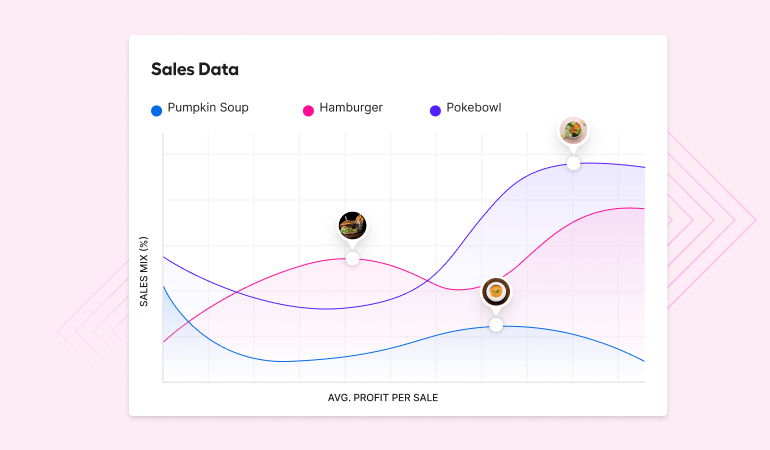
I’ve talked to hundreds of F&B executives over the last couple of years.
When it comes to what’s keeping most of you up at night, it all falls into three broad categories:
- keeping food cost down — there’s little wiggle room on the revenue side. And that wiggle room is expensive. You know your ticket to success is cost efficiency…
- squashing costly human errors — from menu engineering to procurement mistakes that you don’t even find out about until you do a yearly audit. It all adds up…
- dialling in on future successes — from growing in current markets to expanding into new ones, all the way to innovating and honing their digital F&B strategy.
This is all high-level stuff. Working on it with spreadsheets, legacy systems, or even point solutions is not the best way to tackle it. This goes double if you’re doing it for hundreds (or even thousands) of individual units.
That’s where AI-powered digital transformation comes in.
At its core, AI-enabled digital transformation lets you do your job faster, better, and leaner.
And that should always be your goal.
And as for why you need to start working on it ASAP?
There are two reasons:
- Everyone’s thinking about it, but major players are still out — big chains are still testing the business applications of AI. Actually, they are all working to figure out how to implement it into existing processes. This gives you an edge. If you start from scratch today, you’ll be miles ahead of them when they realise it’s time for the ‘out with the old, in with the new’-approach.
- It takes time to achieve the necessary digital maturity — transformation doesn’t happen overnight. You need to test, iterate, experiment, fail, and then test some more. You need to develop integrations; you need to train your tech and systems, and you need to get buy-in at almost all levels of the organisation. The sooner you start, the better.
Get your foot in the door sooner rather than later, and you will reap the benefits of digital transformation in F&B :
- A level playing field between yourself and emerging, digitally-led competitors;
- New business models to turn to when the market goes on the fritz [goodbye, Covid!]
- A ‘fail fast’ mentality that results in quick turnarounds for ‘go-to-market’ initiatives;
- A more meaningful employee/customer relationships [stronger brand/employer brand];
- Access to innovative products/services to replace aging concepts.
Wouldn’t that be something?
And now, let’s take a look at where the road to digital transformation in F&B starts…
Digitisation, Digitalisation & Digital Transformation — An All-You-Need-To-Know Primer for F&B Professionals
We’ve already established that digital transformation in the F&B sector (or anywhere else, for that matter), doesn’t happen overnight.
It’s not a switch that you can flip, and voila! — you’re whisked away to the magical DT land.
It actually starts somewhere, and then you build on it, piece by piece.
And it starts with two similarly-named (but wildly different) processes:
- Digitisation — doing the same thing (counts, inventory, procurement) differently;
- Digitalisation — using technology to do new things that drive your operation forward.
Let’s examine this more closely.
F&B Digitisation — Moving From Unruly Post-Its to the Digital World
Digitisation means replacing labour-intensive manual processes with digital ones.
This is something you’re likely already doing, regardless of whether you run F&B for a large B2B catering operation or a hotel chain.
… and if they do, you’re likely losing money due to booking errors, resource-wasting, and poor planning.
… but rather like this:
Digital menus are another example of digitisation in the F&B service sector. They are not as common as digital table booking systems… but we’re getting there. Front-of-house (FoH) has been digitising processes for two decades. And now, technology assists the wait staff with everything from payments to order-taking.
Digitisation of the back-of-house (BoH) processes has been moving at a slower pace.
It’s mind-boggling that most operators (even huge, international ones) still rely on pen and paper for inventory counts. In a world where restaurant and F&B service margins are razor-thin, relying on spreadsheets and Post-It notes for thousands of items that come in and out of your operation doesn’t bode well for cost control.
Luckily, a lot of F&B operators are waking up to the fact that a tight inventory management system is the backbone of every profitable F&B operation. Since you’re not in the thick of it directly, you should make sure that your line managers are talking stock management seriously (as well as quickly and efficiently).
Our inventory management module not only speeds up the whole process; it also automates a lot of the actions (adds up deliveries and transfers, and subtracts used items based on receipts and prep sheets). Best of all, you can easily deploy it across your entire operation — and get instant access to reliable, uniform, and accurate data to guide your decisions.
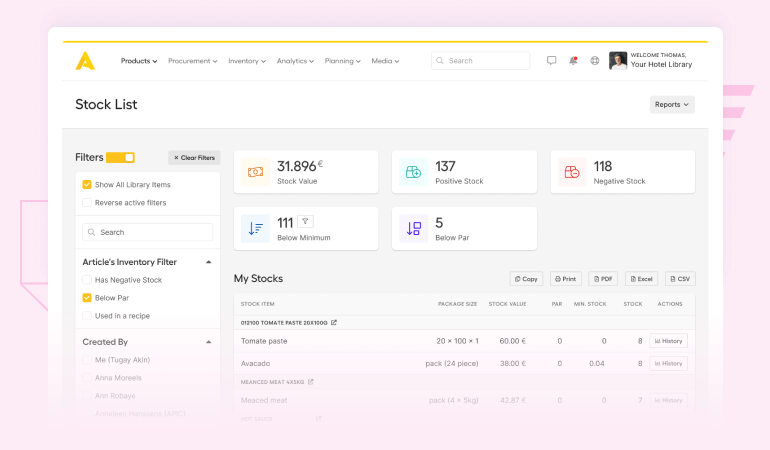
There are plenty more examples of digitisation in the F&B sector [in both service and manufacturing]. But, the benefits they all bring to the table are largely the same:
- Decreased costs
- Streamlined operations
- Optimised resource management
- Reduction in human errors
- Better customer experience
F&B Digitalisation — Making Your Systems & Tech Do All the Legwork
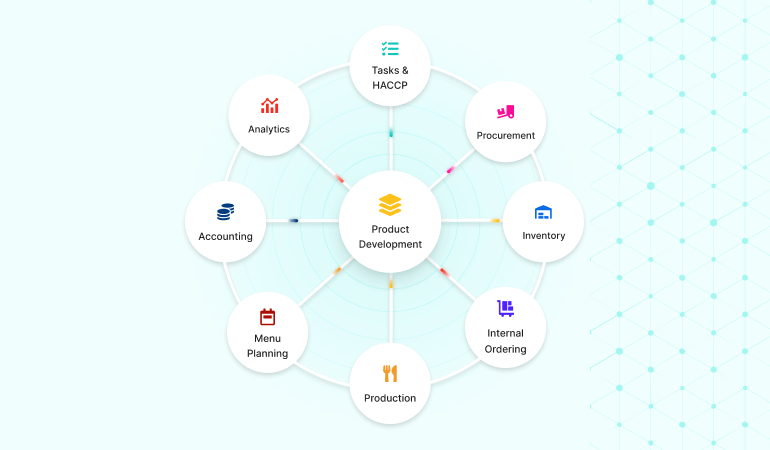
I mentioned how Apicbase adjusts the theoretical inventory at all your locations based on intake, prep, waste, transfers, and similar.
So…
150 [pieces of stock] + 20 [delivered] + 8 [transferred in] – 40 [used or created out] – 2 [past date] = 136 [pieces of stock]
The best part here?
Neither you nor any of your F&B inventory managers have to call anyone up to get these numbers. All it takes are a few clicks, and the information is at your fingertips.
This is a prime example of F&B digitalisation in action.
F&B digitalisation means that your systems and tech ‘talk’ to each other to automate mundane manual tasks that would either:
- be impossible to do (instant warning if stock falls below par levels) or;
- remain too cost-prohibitive to do (daily stock counts across all your units).
Besides automatic stock counts, you can also use Apicbase to almost completely automate your procurement without risking over or under-stocking. This requires thousands of daily math operations (from calculating inventory and inventory turnover to analyzing historical sales data). This means that an army of number-crunching data analysts would be hard-pressed to do it all manually.
With Apicbase, all that’s left for your unit or line managers is to inspect the order forms and press that ‘E-Mail Order’ button.
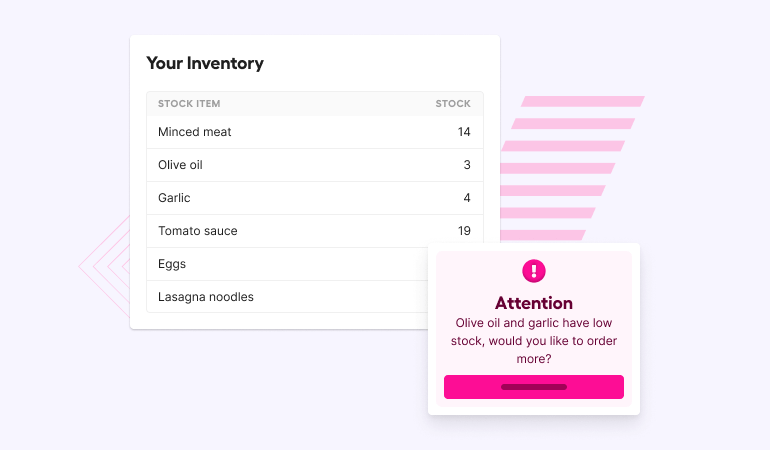
But (similar to digitisation), BoH processes are lagging behind FoH when it comes to F&B digitalisation. Front-of-house is much more ‘in tune’ with the zeitgeist, and there are a lot of examples of digitalisation here that you can use to get inspired.
- Advanced online table reservation system — these make it easy for customers to book a table and leave additional info. If the system integrates with BoH systems, it can create tailored digital menus (for adults and kids), and even scrap items that contain allergens (based on the details that the customers share about their food allergies).
- Staff management and rota creation — yet another example of F&B digitalisation. Based on historical data, the system can figure out how many servers and BoH staff you need at any particular location months in advance. This keeps labour costs predictable, and it’s a real asset if you’re running large-scale catering or cloud-kitchen operations, where margins are razor-thin as it is.
- Waste & pilferage warning system — an advanced BoH platform can be trained to spit out data about excess waste or even pilferage. For example, Apicbase can flag instances of increased waste production at certain locations (and even during certain shifts. This allows you to monitor the situation and, if needed, take steps to figure out if there’s pilferage happening at any of the flagged locations.
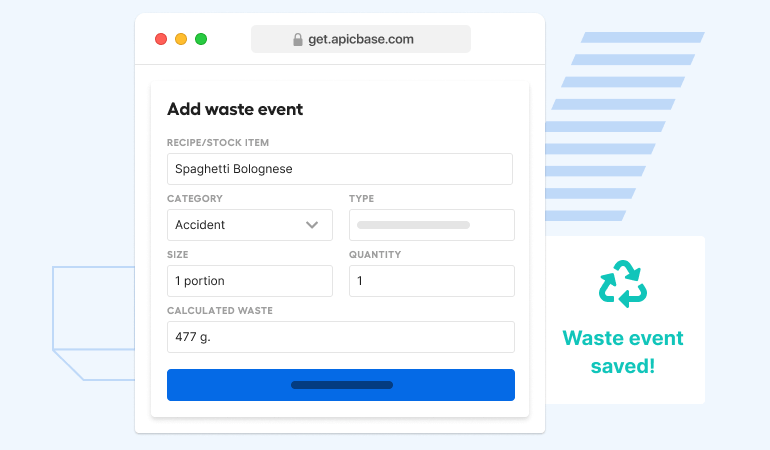
The key to deploying smart F&B digitalisation solutions is understanding that data is king.
If your F&B tech strategy relies on legacy systems such as modified ERP or CRM systems (like most restaurant chains, hotel chains, and large caterers do), you’re running on fumes. You’re even running on fumes if you’re using specialised point solutions. You need your tech to talk to each other… and that’s difficult to do with a cobbled-together tech ecosystem.
What you need is an all-around restaurant management platform that integrates with the most powerful FoH and BoH systems out there. Like Apicbase [click to see our seamless integrations]. Only then are you truly ready for the next step — true, AI-driven F&B digital transformation.
F&B Digital Transformation — Your Ticket to Running a Lean, Profitable Operation
When you take a look at what F&B digitalisation alone affords you, you might wonder what’s the point of going beyond that, right?
How can you beat things like:
- Programs that sift through thousands of data points in the blink of an eye;
- Tech that integrates and communicates to enable error-free automations
- Systems that connect to facilitate increased customer satisfaction.
It’s magic already… at least to the untrained eye.
But now add an AI brain to it all, and watch it take off into the stratosphere.
Full F&B digital transformation is about both short-term planning and long-term strategising. The AI processes that tick away behind the solutions that are powering digital F&B strategy and transformation take into account millions of data points (internal and external) without creating a DRIP (data rich, information poor) environment. Instead, your tools parse through your data (+ outside data) to find what’s relevant for your operation in your current set of circumstances.
Recommended Reading: 3-Step Blueprint for Digital Transformation in F&B
And they get smarter and smarter after each calculation…
The AI that’s powering the F&B digital transformation increases long-term predictability
[‘How much will I spend on labour three months from now, in September?’]
while decreasing short-term uncertainty
[‘Will our regional produce supplier fail to deliver the needed quantities for the next month?’].
And that’s is where the money is.
Let’s look at a few examples of what a digitally-transformed F&B business can do (without you lifting a finger):
- Automated procurement — down to the level of suggesting a different supplier on specific days/months because they have better deliverability/quality/quantity scores.
- Smart F&B waste management — bins that weigh and recognise food waste so that you can either introduce extra training or revisit portioning and menu engineering.
- Review predictions — knowing the days (weather, holidays, time of year) when your online reviews take a nosedive & stepping up the level of service to offset that.
- Personalised digital menus — facial recognition technology that tailors digital menu offers based on the age, gender, ethnicity, or status (new or returning) of the customer.
- Staff planning — down to a minute for each employee, thanks to the HR tech connecting to FoH and BoH (so it gets fed historical data, forecasts, and external data).
And here’s the thing… the tech mentioned above is not a ‘pie in the sky’ kind of thing.
It’s here right now, and it’s time you start using it to build a better F&B business.
The Time for Your F&B Digital Transformation is NOW
I understand how letting go of legacy systems in a large F&B operation can feel intimidating.
And this goes double for when you’re replacing them with technology that very few people actually ‘get’.

Recommended Download: Ultimate Guide to Digital Transformation in the Restaurant & Foodservice
So if you’re hesitant to embrace digital transformation in your F&B business, that’s understandable. I’m sure the good folks I’ll list below were also hesitant. But hey, they took the leap, and now are able to manage their day-to-day business better, faster, and smarter:
- … Fréderique Van Alfen-Las, for example, manages 18 catering outlets serving 24,000 students and 5,000 employees of the Radboud University, in a single dashboard.
- … like Ingrid van de Loo, the Netherlands-bound F&B manager who uses Apicbase to handle stock and procurement… for ships that spend 6 months in the Arctic…
- … and Jim Martin, the OEM for Allnex, who deployed Seebo to cut quality and yield losses by as much as 75% through elimination of kinks in Allnex’ production processes…
- … or Sergio Escribano, Horticola CEO, who has partnered with TOMRA to streamline the processing and packaging of veggies so only the best produce is shipped out.
My point here?
You don’t have to be an AI or a digital transformation expert to reap the same benefits. You don’t even have to understand the tech. That’s not a prerequisite.
But… you do have to realise that AI is the next logical step for growing your business.
And then you need to start on implementation ASAP.
Enter Apicbase — the F&B management platform that will quickly become the F&B backbone of your operation.
Just imagine…
- … no more combing through countless spreadsheets because all your product data [from recipes and tech sheets to orders and vendor details] is available with a few clicks of the button…
- … drastically reduced human errors [which leads to lower food costs] because Apicbase does the number-crunching and keeps track of all your F&B KPIs & monitors all BoH processes…
- … seamless tech integrations across your operational ecosystem [POS, IoT, supply chain, personnel training] because Apicbase ensures your data is uniform, standardised, and usable.
Apicbase IS the digital transformation of your F&B operations
An F&B management platform is the core of your digital F&B strategy. And it is the one thing that will futureproof your back of house.
And where could you take your business with a BoH platform that advanced?
There’s only one way to find out.
(Fill out the form, and we’ll arrange a date and time that works best for you and your team)


